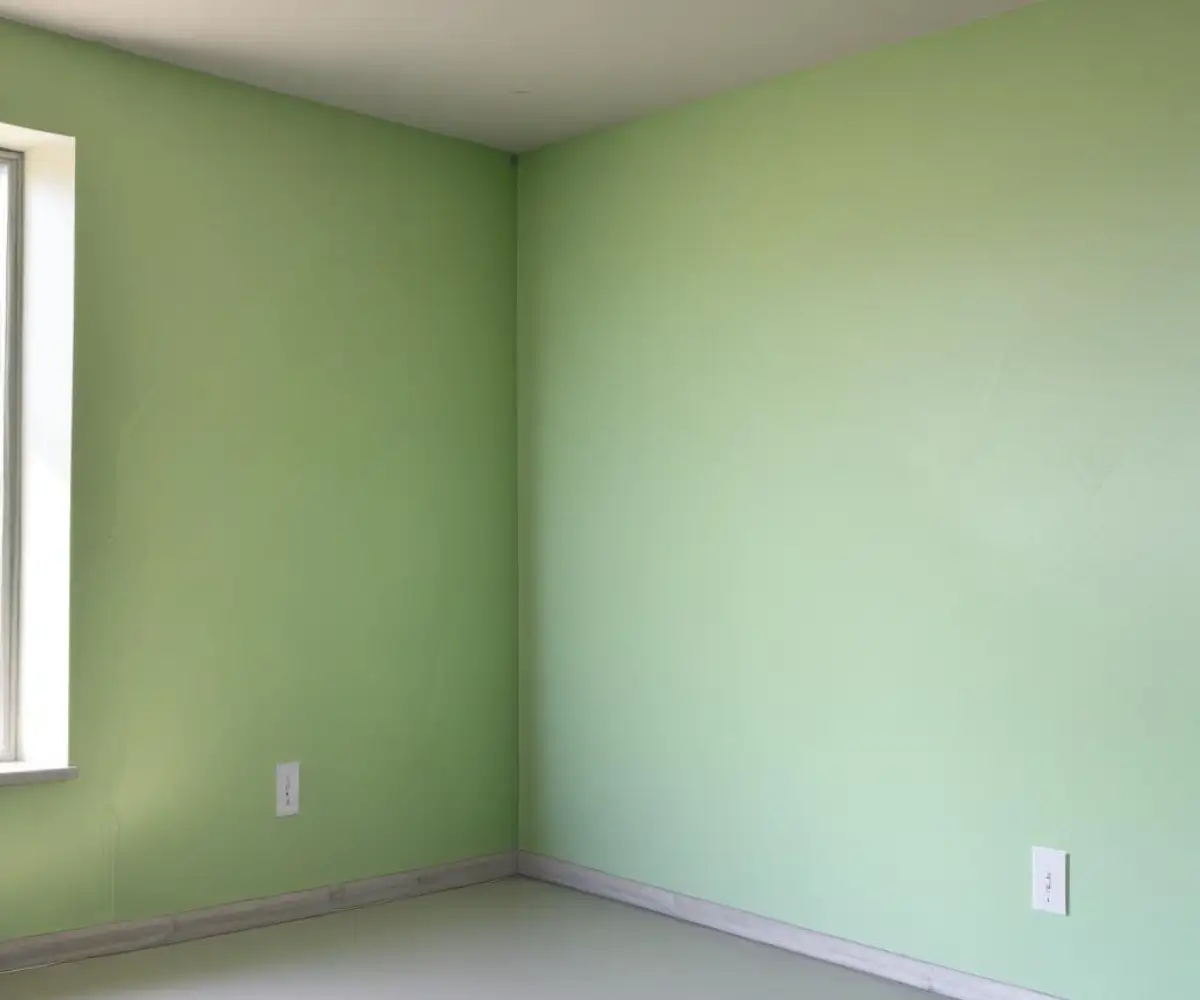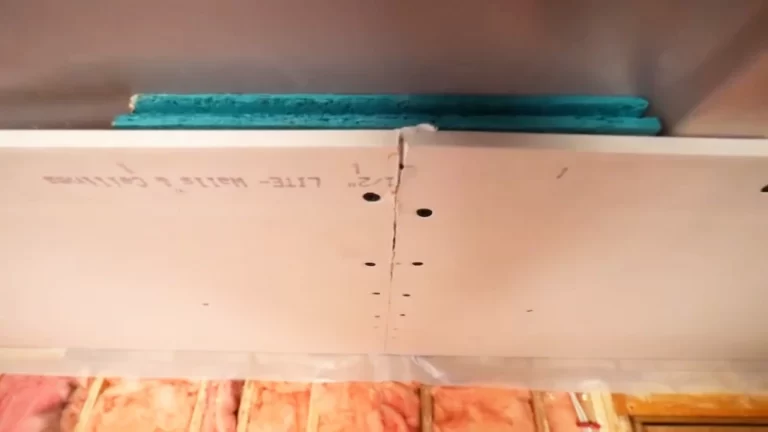AquaDefense on Drywall: Stop! Read This Before You Lay a Single Tile
When it comes to waterproofing a shower, choosing the right method is crucial for ensuring long-term durability and performance. AquaDefense, when applied over a suitable substrate like glass-mat gypsum, offers a fast and highly effective solution for creating a seamless, waterproof barrier.
This modern approach can deliver professional-level results, but it requires precision and careful adherence to the manufacturer’s guidelines.
AquaDefense is an excellent choice for those willing to invest time in meticulous preparation. Traditional options like cement board still stand as reliable alternatives for those seeking a more robust, tried-and-true solution.
You'll Learn About
The Million-Dollar Question: Can You Really Use Drywall in a Shower?
For decades, the common wisdom has been clear: drywall and water are mortal enemies. The very idea of using a gypsum-based panel in a high-moisture environment like a shower seems like a recipe for disaster.
This fear is rooted in fact. Standard drywall has a gypsum core wrapped in paper, and when that core gets wet, it turns to a mushy, unstable paste. The paper facing not only disintegrates but also provides a food source for mold, leading to serious structural and health problems.
Understanding the Modern Shower: It’s a System, Not Just Tile
The game changed with the advent of modern waterproofing systems. Many homeowners mistakenly believe that tile and grout are waterproof, but they are not. Grout is porous, and water can and will seep through it over time.
The true water barrier in a modern shower is the membrane that sits behind the tile. This is where a product like Mapei’s AquaDefense comes in. It’s a liquid-applied, elastomeric waterproofing membrane that, when applied correctly, creates a seamless, rubber-like barrier that is completely impervious to water.
Thinking about the entire assembly as a complete unit is the key to success. For a deeper dive into how these components work together, exploring the best shower waterproofing system for your specific needs provides essential context.
AquaDefense Over Drywall: The Critical Details Manufacturers Insist On
So, can you apply AquaDefense directly over drywall? The short answer is yes, but with major caveats. The success of this method depends entirely on using the right type of drywall and following the manufacturer’s instructions to the letter.
While technically possible over moisture-resistant drywall (often called “green board”), the industry best practice, and the most robust solution, is to use a glass-mat faced gypsum panel. These panels have a fiberglass mat instead of a paper face, making them inherently resistant to mold and much more durable in a damp environment, even before the waterproofing is applied.
Why Not Just Use Regular Drywall?
Using standard, paper-faced drywall in a shower, even with a membrane like AquaDefense, is a significant risk. If there is even a pinhole-sized breach in the membrane from a screw, a scratch, or improper application, water will reach the paper.
Once the paper gets wet, mold can begin to grow. This is not just a surface issue; it becomes a hidden problem behind your beautiful tile, compromising air quality and the integrity of your wall assembly.
The Rise of Glass-Mat Gypsum Panels
Products like DensShield® or GlasRoc® represent a crucial evolution for tiled wet areas. The fiberglass mat on these boards is embedded into the gypsum core, creating a panel that does not support mold growth and offers superior dimensional stability when exposed to moisture.
When you apply AquaDefense over a glass-mat panel, you are creating a dual-barrier system that offers incredible protection and peace of mind. It is the professional standard for this type of application.
Step-by-Step Guide: How to Apply AquaDefense to Drywall for a Bulletproof Seal
Proper application is not just about painting a green coating on the wall. It’s a meticulous process where every step is critical to creating a monolithic, waterproof seal that will last for decades.
Step 1: Surface Preparation is Everything
The drywall surface must be perfectly clean, dry, and smooth. All joints and fastener heads must be finished with a setting-type joint compound (not a pre-mixed, air-dry compound, which can re-emulsify when wet).
After the compound has fully cured, sand it smooth and remove every trace of dust with a vacuum and a damp cloth. Do not skip this step. Dust is the enemy of adhesion, and a poor bond will compromise the entire system.
Step 2: Detailing Seams, Corners, and Fasteners
Changes of plane (corners) and seams are the most vulnerable points in any waterproofing system. These areas must be pre-treated. Apply a liberal coat of AquaDefense over all seams, corners, and fastener heads.
While the first coat is still wet, embed a 2-inch wide waterproofing mesh tape (like Mapei’s Mapeband) into the membrane, ensuring there are no wrinkles or air bubbles. Immediately apply another thin coat of AquaDefense over the tape to fully encapsulate it.
Step 3: The First Coat – Your Foundation
Using a 3/8-inch nap roller, apply the first full coat of AquaDefense to all wall surfaces. Work from the top down, maintaining a wet edge to avoid lap marks. The goal is a consistent, even layer without any voids or pinholes.
Check the manufacturer’s instructions for the recommended wet film thickness (WFT). This is a crucial metric that ensures you are applying enough product to create a truly waterproof barrier once it cures.

Step 4: The Second Coat – Achieving a Monolithic Barrier
Allow the first coat to dry completely, which typically takes 30 to 50 minutes. It will change from a light mint green to a darker, olive green color when cured. Once cured, apply the second coat in a direction perpendicular to the first.
This cross-hatch application helps ensure complete coverage and eliminates any pinholes you may have missed in the first pass. Again, aim for a consistent thickness. Let the final coat cure fully before beginning any tile installation, usually for at least 12-24 hours.
The #1 Mistake That Guarantees Failure (And How to Avoid It)
The single most common mistake DIYers make is applying too little product. It’s easy to think of AquaDefense as just a thick paint or a primer, but it’s not. It is a high-performance membrane that must be applied to a specific thickness to function correctly.
Manufacturers specify a required “mil thickness” (a mil is one-thousandth of an inch). Simply “painting it green” is not enough. A coat that is too thin will not have the elasticity or hydrostatic pressure resistance to prevent water from passing through. This is how leaks start, leading to the kind of hidden damage that can promote serious issues. A failed membrane inevitably results in a saturated substrate, creating the perfect conditions for the type of decay and contamination seen with problems like Drylok and mold in basements.
System Comparison: How Does AquaDefense on Drywall Stack Up?
Choosing the right backer for your shower involves trade-offs between cost, labor, and performance. Understanding where the AquaDefense over glass-mat drywall method fits can help you make an informed decision.
| Feature | AquaDefense on Glass-Mat Drywall | Cement Board + Liquid Membrane | Foam Board (e.g., Kerdi-Board) |
|---|---|---|---|
| Cost | Moderate | Moderate to High | High |
| Labor / Time | Fast. Easy to cut, no pre-drilling, but requires multiple coats and drying time. | Slow. Heavy boards, dusty cuts, requires taping and mortaring seams. | Fastest. Lightweight, easy to cut, seams are waterproofed with band. |
| Waterproofing Integrity | Excellent (when mil thickness is achieved) | Excellent (membrane is key) | Excellent (inherently waterproof) |
| Learning Curve | Low to Moderate. Seems easy but requires precision. | Moderate. Handling heavy sheets can be difficult. | Low. Generally considered very DIY-friendly. |
| Weight | Lightweight | Very Heavy | Extremely Lightweight |
Common Questions and Concerns, Answered
Even with a clear plan, questions often arise during a project. Here are some of the most common queries about using AquaDefense on drywall.
How long does AquaDefense take to dry on drywall?
Each coat typically takes 30-50 minutes to become tack-free and ready for another coat, indicated by a color change from light to dark green. However, it’s crucial to wait at least 12-24 hours after the final coat before flood testing or installing tile to allow for a more complete cure.
Do you need a vapor barrier behind the drywall?
No. Liquid-applied waterproofing membranes like AquaDefense act as a vapor retarder. Installing a plastic vapor barrier behind the drywall in a shower can create a “double barrier” situation, trapping any moisture that gets into the wall cavity, which can lead to rot and mold. Always check local building codes for specific requirements.
What happens if the AquaDefense layer gets scratched before tiling?
If the membrane is scratched or gouged deep enough to expose the drywall underneath, it must be repaired before tiling. Simply clean the damaged area and apply a fresh coat of AquaDefense over the scratch, feathering it into the surrounding membrane. Allow it to cure fully before proceeding.
The Final Verdict: Is AquaDefense Over Drywall the Right Choice for You?
Using AquaDefense over a suitable drywall substrate (preferably glass-mat gypsum) is a perfectly viable, high-performance method for waterproofing a shower. It is fast, effective, and creates the seamless barrier necessary for a durable, long-lasting installation.
However, it is not a forgiving system. Success is entirely dependent on meticulous preparation and strict adherence to the manufacturer’s specifications, especially regarding membrane thickness. If you are willing to be precise and detail-oriented, this modern approach can yield professional results. For those who prefer a more traditional and perhaps more robust method, cement board remains a trusted alternative.

